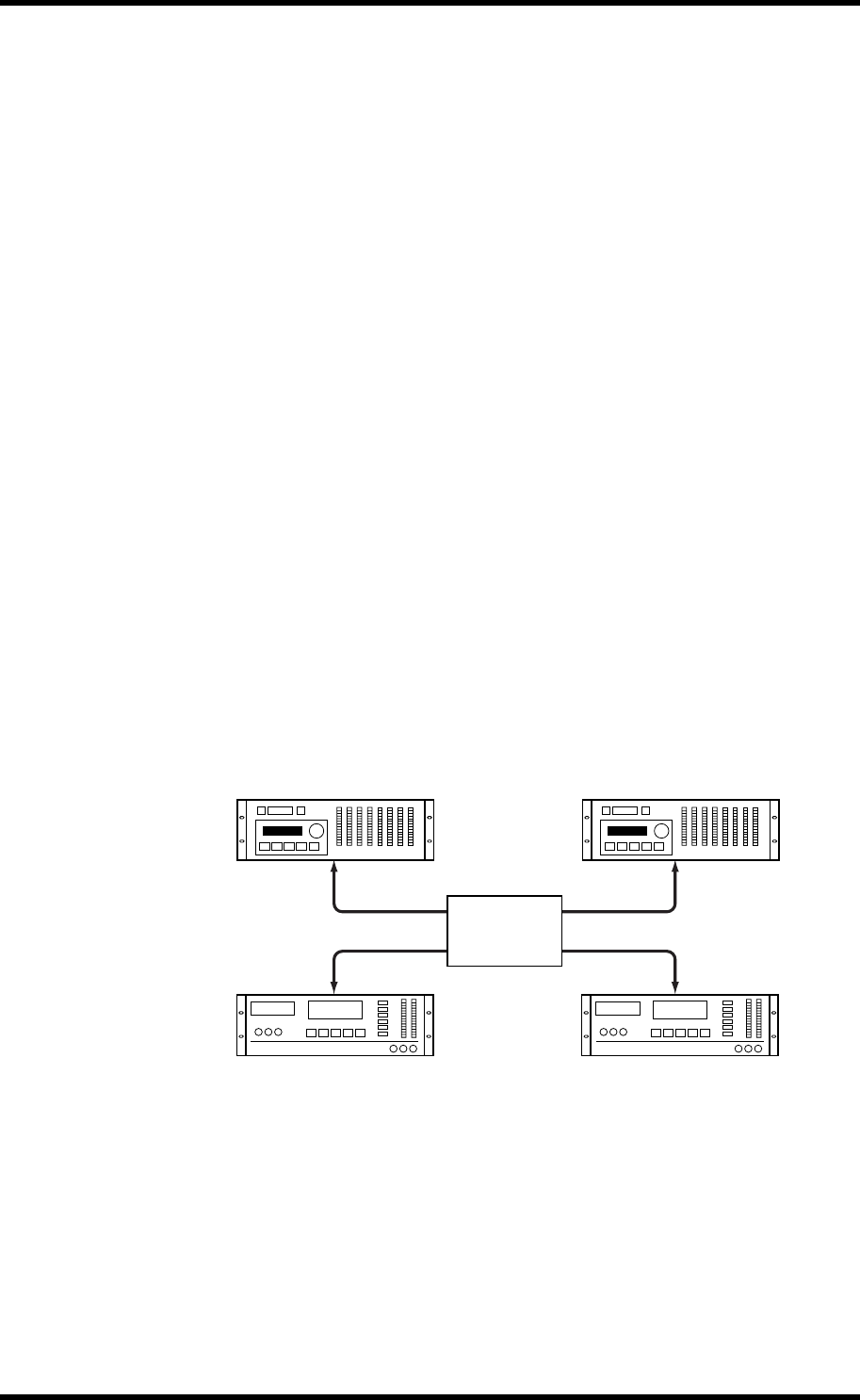
206 Chapter 16—Using the Digital Inputs & Outputs
01V—Owner’s Manual
About Wordclocks
Unlike analog audio equipment, digital audio equipment must be synchronized when
digital audio is transferred from one device to another. Otherwise, the digital audio
might not be read correctly and audible noise, glitches, or clicks may occur. Synchroni-
zation is achieved using what’s called a wordclock, which is a clock signal for synchro-
nizing all the digital audio words in an audio system. Note that wordclocks are not the
same as SMPTE or MIDI timecode, which are used to synchronize audio recorders,
MIDI sequencers, and so on. Wordclock synchronization refers to the synchronization
of the digital audio processing circuits inside each digital audio device.
In a typical digital audio system, one device acts as the wordclock master and the other
devices act as wordclock slaves that synchronize to the master wordclock signal. If the
01V is the only digital audio device in your system, no special wordclock settings are
required and the 01V synchronizes to its own internal wordclock. Add a DAT recorder
or digital multitrack recorder, however, and you must decide which device to use as
wordclock master and which devices to use as slaves. Even when you’ve done this and
configured your system, it may be necessary to change the wordclock settings in certain
situations, such as when recording from a DAT or CD player.
The wordclock signal runs at the same frequency as the sampling rate. The 01V gener-
ates its own wordclock at 44.1 kHz (the industry-standard sampling rate for music
CDs) and can be used as wordclock master. Alternatively, it can be used as a wordclock
slave synchronized to an external wordclock of between 44.1 kHz –10% and 48 kHz
+6%. Converting the sampling rate of digital audio is a complicated process, so it’s best
to use the 44.1 kHz sampling rate, especially if your work is destined for CD distribu-
tion.
Wordclock signals can be distributed via dedicated cables or derived from standard dig-
ital audio connections, as shown below. With AES/EBU and Coaxial digital audio con-
nections, a wordclock signal is transmitted even when no audio signal is present.
In a system where all devices share a common wordclock, it’s important that all devices
be turned on even when they’re not being used. Turn on the wordclock master first, and
then the slaves. When shutting down the system, turn off the slaves first, and then the
master. Before commencing with a recording session, make sure that all wordclock
slaves are synchronized to the master wordclock. Some devices have front panel indica-
tors to show when they are wordclock synchronized. Refer to the instructions for each
device.
The following system examples show three typical wordclock setups with the 01V. For
detailed system examples with specific equipment, see “System Examples” on page 241.
Wordclock
master
Wordclock slave Wordclock slave
Wordclock slave Wordclock slave
Wordclock In
Wordclock Out
Digital Audio Out
Digital Audio Out
Wordclock Out
Digital Audio In
DAT
00.00.00.00
Digital Audio In
Wordclock In
DAT
00.00.00.00


















